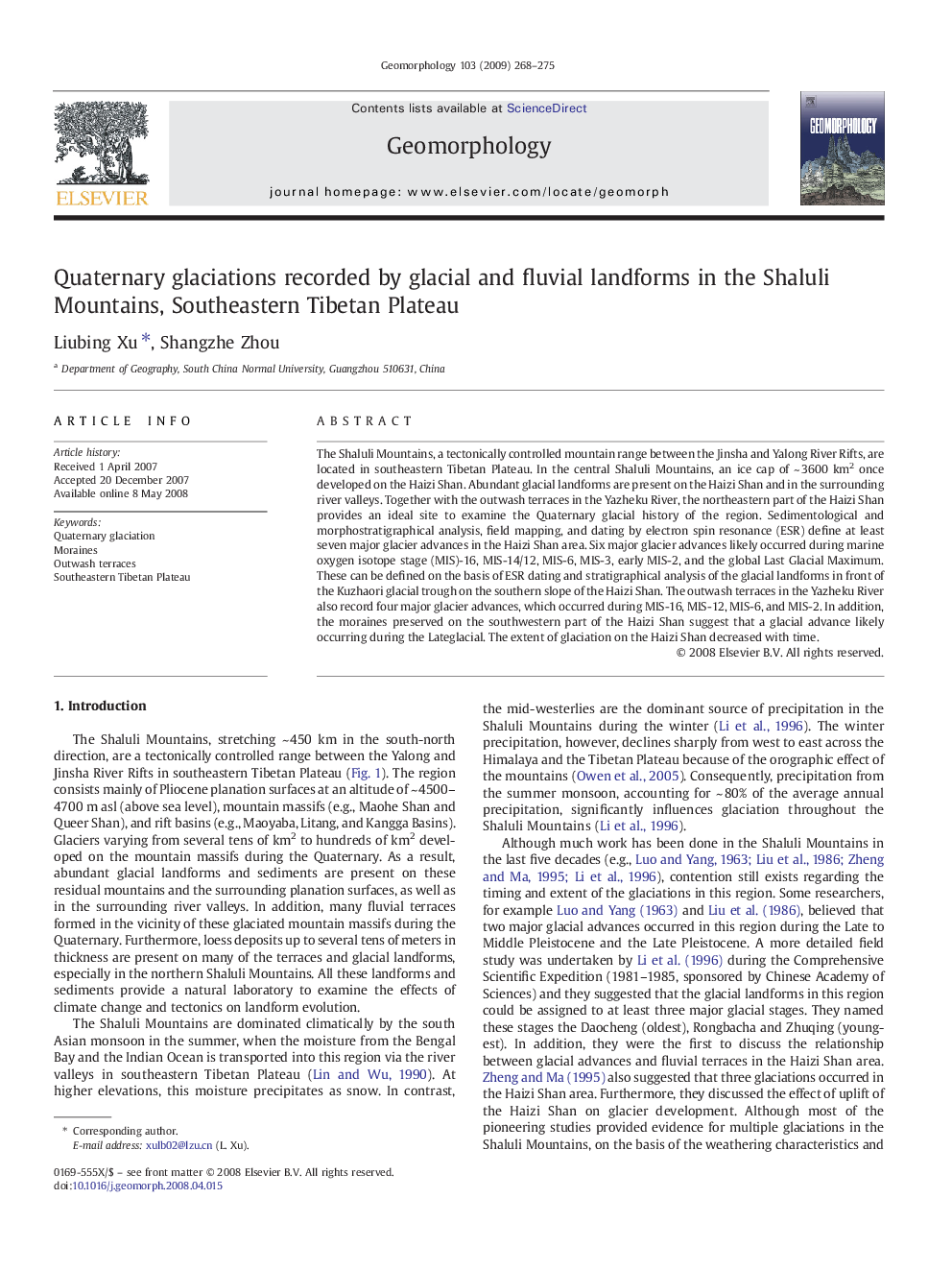| Article ID | Journal | Published Year | Pages | File Type |
|---|---|---|---|---|
| 4686833 | Geomorphology | 2009 | 8 Pages |
The Shaluli Mountains, a tectonically controlled mountain range between the Jinsha and Yalong River Rifts, are located in southeastern Tibetan Plateau. In the central Shaluli Mountains, an ice cap of ~ 3600 km2 once developed on the Haizi Shan. Abundant glacial landforms are present on the Haizi Shan and in the surrounding river valleys. Together with the outwash terraces in the Yazheku River, the northeastern part of the Haizi Shan provides an ideal site to examine the Quaternary glacial history of the region. Sedimentological and morphostratigraphical analysis, field mapping, and dating by electron spin resonance (ESR) define at least seven major glacier advances in the Haizi Shan area. Six major glacier advances likely occurred during marine oxygen isotope stage (MIS)-16, MIS-14/12, MIS-6, MIS-3, early MIS-2, and the global Last Glacial Maximum. These can be defined on the basis of ESR dating and stratigraphical analysis of the glacial landforms in front of the Kuzhaori glacial trough on the southern slope of the Haizi Shan. The outwash terraces in the Yazheku River also record four major glacier advances, which occurred during MIS-16, MIS-12, MIS-6, and MIS-2. In addition, the moraines preserved on the southwestern part of the Haizi Shan suggest that a glacial advance likely occurring during the Lateglacial. The extent of glaciation on the Haizi Shan decreased with time.
